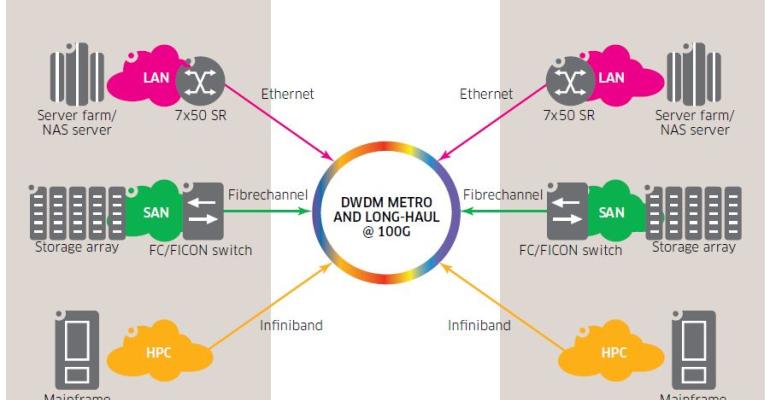The modern data center is a part of the “on-demand” generation where data, applications, and workloads need to be constantly available. Part of this drive has been the technologies around cloud computing, a lot more data center need, and of course – virtualization. This new generation of virtual computing and storage resources dictate that SPs need more than a pair of (active and backup) data centers — and typically require many data centers to support their enterprise customer base. Low latency transport enables multi-data center architectures, where all data centers are connected together with a scalable and redundant mesh of high-speed links. The data center mesh then delivers processing, storage, and networking to end-user locations for optimal application performance, even though the underlying data may be moving dynamically between data centers attached to the mesh.
In this white paper, you will learn how Dense Wave Division Multiplexing (DWDM) transport is the leading technology to meet Data Center Connect (DCC) requirements. DWDM is the only solution that enables full network flexibility and adaptability at speeds of 100G and beyond, quick service turn-up to meet dynamic bandwidth requirements, ultra-low latency connectivity, and transport grade reliability. Ultimately, DWDM solutions enable the highest throughput for DCC at the lowest total cost of ownership (TCO) for SPs.
In working with intelligent, highly-scalable technologies – it’s important to understand where best-in-class capabilities are within a product. For example, the Alcatel-Lucent 1830 PSS is a best-in-class DWDM platform, including 100G coherent optics, T-ROADM, photonic OA&M, and metro to long haul reach. Scaling higher than 2 TB in a single chassis, and as low as a single slot version, the 1830 PSS also supports interchangeable line cards. Download this white paper today to learn how the current data center evolution will be addressed through the DWDM infrastructure. This means an integrated T-ROADM for flexibility, and metro and long haul 100G transport to meet scale and reach requirements. The final product will see an infrastructure which can deliver fixed, predictable latency without traffic loss, and high reliability – thus making it inherently protocol transparent.





